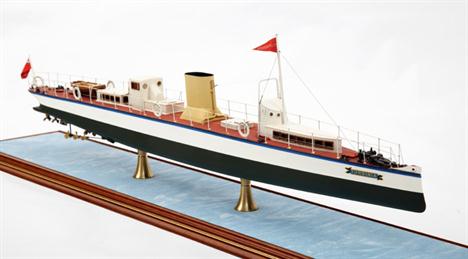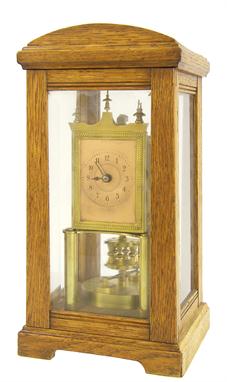We found 131341 price guide item(s) matching your search
There are 131341 lots that match your search criteria. Subscribe now to get instant access to the full price guide service.
Click here to subscribe- List
- Grid
-
131341 item(s)/page
TRENCH ART POCKET CIGARETTE LIGHTER made from a large bullet case QUANTITY OF CIRCA 1940`S POST CARDS FROM FRANCE some in booklet/set from a BRITISH AIR FORCES OF OCCUPATION (GERMANY) CHRISTMAS 1945 CARD and a V.E.DAY MAY 8TH 1945 CARD sundry pieces of BRITISH ARMED FORCES - PAPER CURRENCY TRANSPORT COMMAND PASSENGER TICKET and related ephemera including SUPPER & CIGARETTE TICKETS together with items acquired whilst on service including WHITE METAL AND NIELLS WORK PAPER KNIFE OF SIMILAR SHAPE inscribed R. Fielding BASRAH 1946 together with French and other nominal value coinage and a COLLECTION OF SILK CARDS ISSUED BY `MY WEEKLY` girls magazine/paper includes Our SOldier Boys, Soldiers of the King series and a gents leather travel case with razor, hair brush etc.
H.M.S.O. PUBLICATION `THE BATTLE OF BRITAIN` - August to October 1940, ANOTHER `OFFICIAL PROGRAMME OF THE VICTORY CELEBRATIONS 8th June 1946, TOGETHER WITH SUNDRY POST WAR MANCHESTER OPERA HOUSE AND PALACE THEATRE PROGRAMMES AND A TRADE PHOTOGRAPH, No. 14 Frances Motors Ltd, Manchester 1 Ton G.M.C. flat back lorry, circa 1920`s, 22 pieces in total
Numismatic: a collection of Euros, the European Coin sets collection, pre and post Euro, all mint and in albums, each set with 2 and 1 Euro coins, a booklet of the first Euro stamps, Queens Golden Jubilee, Monarchs of the 20th century including a penny red unfranked England Football Wembley £1. (3)
THE BATTLE OF TRAFALGAR/NELSON’S FUNERAL, Victory at Trafalgar….The Last General Order of Lord Nelson, dated the 21st Oct. 1805, previous to the engagement between the continental fleets of France and Spain, consisting of 33 sail of the line, and the British Fleet of 27 sail of the line - on board the Victory at Sea… Nelson’s and Bronte’s orders for tactics and action are printed (page 2, Column 1, 31cm. of column space); also Extract from the Log Book of His Majesty’s Ship Victory… a faithful reprint from the retrospective of the battle (page 2, columns 1-2, 18cm. of column space); also Lord Nelson’s Coffin…The following are the principal ornaments and devices on the external coffin, which has been prepared for the remains of the departed hero… (page 3, column 3, 14cm. of column space); also Lord Nelson’s Funeral…. Long account describing the details of the vast funeral to take place with details of attendees, procession and service. (page 3, column 3, 26cms of column space), all in a contemporary and complete issue of THE ENGLISH CHRONICLE AND WHITEHALL EVENING POST, dated December 31st, 1805; together with Further Particulars Of The Late Naval Victory Off Cape Trafalgar… A lengthy and descriptive account of the great Naval action written from information obtained from both British and Spanish sources (front page, column 4-5, continues on page 2, columns 1-2, 214cm. in total), in a contemporary and complete issue of THE COLUMBIAN CENTINEL, dated January 20th, 1806., (2)
A FINE AND WELL-PRESENTED 1:48 SCALE STATIC DISPLAY MODEL OF THE WORLD’S FIRST TURBINE-POWERED CRAFT TURBINIA DESIGNED BY SIR CHARLES PARSONS IN 1894, modelled by John R. Haynes with bespoke pre-formed hull, painted deck with superstructure and fittings as appropriate and including anchor, winch, glazed wheel house with steering wires to aft rudder shoe, deck rails with named life buoys, raked buff-coloured funnel, engine room companionway and observation post, fitted dinghy with gratings, oars etc, the two-tone hull fitted with three propeller shafts each supported three brass propellers, mounted on brass columns within wooden glazed case with maker’s plate. Cased measurements -- 9¾ x 31 x 6in. (25 x 79 x 15cm.) Turbinia was designed by Sir Charles Parsons, inventor and builder of Parsons turbines. She was built by him in 1894 to test Parsons turbines in service and to demonstrate the advantages of turbine vs reciprocating engine propulsion. Naturally, the fastest type of craft should be used for such demonstrations. It was a sad blow when, powered by one radial flow turbine, Turbinia made less than 20 knots due to cavitation at the high turbine speeds of 1800-2000 RPM. Parsons made many studies of cavitation. The single turbine was removed and replaced by three Parsons parallel-flow turbines, each driving a shaft with three propellers on each shaft as clearly seen in this model., The Royal Naval Review for Queen Victoria’s Jubilee took place at the Spithead in 1897. With all the ships of the Navy, guest vessels, and huge crowds looking on, the tiny (comparatively) Turbinia ripped through the rows of cumbersome naval vessels at an astonishing 35 knots. This bravado display effectively demonstrated beyond question the superiority of steam turbines, and in a very short time successful turbine installations had been made and put in service on coastal steamers. The Cunard Line experimented with turbines in the 20,000 ton Carmania, and then entrusted turbines to their Mauretania and Lusitania. Both ships became world famous, the former holding the transatlantic speed record from 1910 to 1929., Turbinia was solely a demonstration vessel to show, as she certainly did, the advantages of turbine drive. Her weight of 44½ tons divided by her horsepower gave a very low 49 pounds per horsepower, only to be surpassed five years later by the American Arrow which, even with reciprocating engines, achieved a figure of 36 pounds per horsepower., Shortly after being photographed alongside the Mauretania, the first large, fast, turbine powered ocean liner, she was laid up on the Tyne. Her after part was retired to exhibition in 1927 in the Imperial Science Museum in London. In 1961 both halves were re-joined in Newcastle on Tyne where she can now be seen.
A quantity of Great British and World coins and tokens, including Elizabeth 1 sixpence, George lll cartwheel two pence 1797, Heaths Colchester castle halfpenny 1794, King George V coronation medallion, two George V coronation commemorative medals, 1946 and 1949 three pence coins, pre and post `47 shillings, low denomination British and world coins, and six coin sets
A post-war Modernist glass vase c.1960, by Kosta of Sweden, in olive green over clear glass, the narrow cylinder base opening to a pan top, cut with offset large circular discs to the inside and outside, leaving a shadow of paler green visible, 7½in. (19cm.) high, engraved mark to base `Kosta SAS 5783`, remains of manufacturer`s label above base.
-
131341 item(s)/page
















































